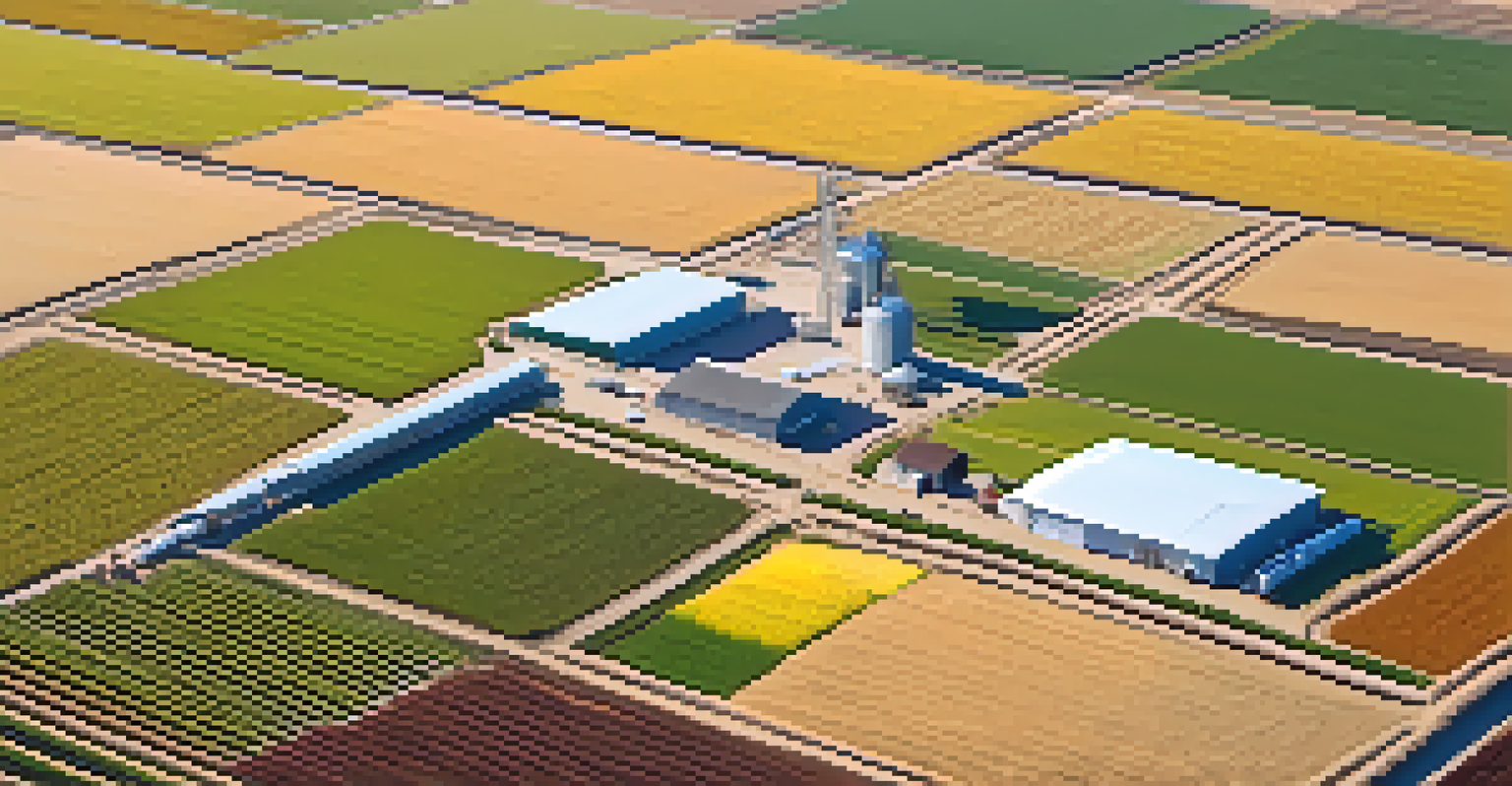Impact of Climate Change on California's Farming Practices

Understanding Climate Change and Its Effects
Climate change refers to long-term shifts in temperatures and weather patterns, often attributed to human activity. In California, these changes manifest through increased temperatures, erratic rainfall, and prolonged droughts. These climatic shifts pose significant challenges for farmers who rely on predictable weather for their crops.
The greatest threat to our planet is the belief that someone else will save it.
As temperatures rise, crops that once thrived in California's Mediterranean climate face stress, leading to reduced yields. For instance, traditional crops like almonds and grapes are particularly vulnerable to heat extremes. This unpredictability forces farmers to adapt their practices rapidly.
Furthermore, changing weather patterns can lead to increased pest populations, as milder winters allow more insects to survive. This not only threatens crop health but also increases the need for chemical interventions, raising concerns about sustainability and food safety.
Impact of Drought on Water Resources
California's agricultural sector is heavily reliant on water, making the state's recurring droughts a critical issue. With less rainfall and dwindling snowpack, water availability for irrigation is becoming increasingly limited. This scarcity compels farmers to rethink their water usage strategies to maintain productivity.

Many are turning to more efficient irrigation systems, such as drip irrigation, which minimizes water waste and maximizes crop yield. Additionally, some farmers are exploring drought-resistant crop varieties that require less water to grow. These adaptations are essential for long-term sustainability in an increasingly dry environment.
Climate Change Challenges Farmers
Farmers in California face significant challenges due to rising temperatures and unpredictable weather patterns affecting crop yields.
However, the cost of implementing these technologies can be prohibitive for smaller farms. This financial strain often leads to a reliance on government assistance programs, highlighting the need for policy changes that support farmers in adopting sustainable practices.
Shifts in Crop Selection and Diversity
As climate conditions evolve, many California farmers are changing their crop selections to adapt. For instance, crops that were once staples may no longer be viable due to increased temperatures or altered rainfall patterns. This shift not only affects what farmers grow but also impacts local food systems.
Sustainable agriculture is a way of farming that meets the needs of the present without compromising the ability of future generations to meet their own needs.
Farmers are increasingly looking toward less traditional crops that can withstand these changes. For example, crops such as quinoa and certain types of beans are gaining popularity due to their resilience in hotter climates. This diversification is a proactive approach to mitigate risks associated with climate change.
Moreover, embracing crop diversity can enhance soil health and reduce reliance on chemical fertilizers and pesticides. By integrating a variety of plants, farmers can create more balanced ecosystems, leading to improved productivity and sustainability.
Economic Implications of Climate-Driven Changes
The economic landscape for California farmers is shifting as climate change impacts productivity and operational costs. Crop failures due to extreme weather can lead to significant financial losses, affecting farmers' livelihoods and food supply chains. This uncertainty makes financial planning increasingly challenging.
Farmers are often forced to invest in new technologies or practices to remain competitive, which can strain their budgets. For instance, switching to drought-resistant crops or advanced irrigation systems involves upfront costs that may not see immediate returns. This financial pressure can lead to difficult decisions about which crops to plant and how to manage resources.
Water Scarcity Drives Innovation
Recurring droughts in California are forcing farmers to adopt efficient irrigation systems and explore drought-resistant crops to maintain productivity.
Additionally, as consumer demand shifts toward sustainably grown products, farmers must navigate market trends while adapting to climate realities. This dual challenge requires innovative strategies to ensure both economic viability and environmental stewardship.
Role of Technology in Modern Agriculture
In the face of climate change, technology is becoming a lifeline for many California farmers. Innovations such as precision agriculture allow farmers to monitor their fields closely, optimizing water use and improving crop health. Drones and satellite imagery provide vital data on soil conditions and crop growth, enabling informed decision-making.
Moreover, advancements in genetic engineering are leading to the development of crops designed to withstand harsher climates. These resilient varieties can help maintain yields in the face of rising temperatures and unpredictable weather patterns. Farmers are increasingly relying on these technologies to adapt and thrive in changing conditions.
However, the adoption of such technologies requires a learning curve and investment, which can be a barrier for some. Bridging this gap is crucial for ensuring that all farmers can benefit from technological advancements and remain competitive in the market.
The Importance of Sustainable Practices
Sustainability in agriculture is becoming more important as climate change continues to reshape farming practices. Implementing sustainable farming methods not only helps preserve the environment but also enhances resilience against climate impacts. Practices such as crop rotation, cover cropping, and organic farming can improve soil health and reduce dependency on chemical inputs.
Additionally, sustainable practices can help farmers adapt to changing conditions by promoting biodiversity and reducing erosion. For example, using cover crops during off-seasons can protect the soil and retain moisture, which is crucial during dry periods. These practices create a more robust agricultural system capable of withstanding climate fluctuations.
Community Support is Essential
Support from local organizations and policy changes is crucial for farmers to implement sustainable practices and adapt to climate impacts.
The push for sustainability is not just a trend; it reflects a growing understanding of the interconnectedness of farming, ecosystems, and communities. By fostering sustainable practices, farmers can ensure the longevity of their operations while contributing to a healthier planet.
Community and Policy Support for Farmers
Farmers are not alone in this battle against climate change; community and policy support play a significant role in helping them adapt. Local organizations and governments are increasingly recognizing the need for resources and training to assist farmers in implementing sustainable practices. This support can take many forms, from grants for new technologies to workshops on water conservation strategies.
Furthermore, advocacy for policy changes is vital to ensure that agricultural needs are met in the face of climate challenges. Policies that promote sustainable farming practices, protect water resources, and provide financial assistance can significantly impact farmers' ability to adapt. Collaborative efforts between farmers, researchers, and policymakers can create innovative solutions to shared challenges.

Ultimately, fostering a strong community that supports farmers through education and resources is essential for building resilience in California's agricultural sector. By working together, stakeholders can help ensure that farming remains viable for generations to come.